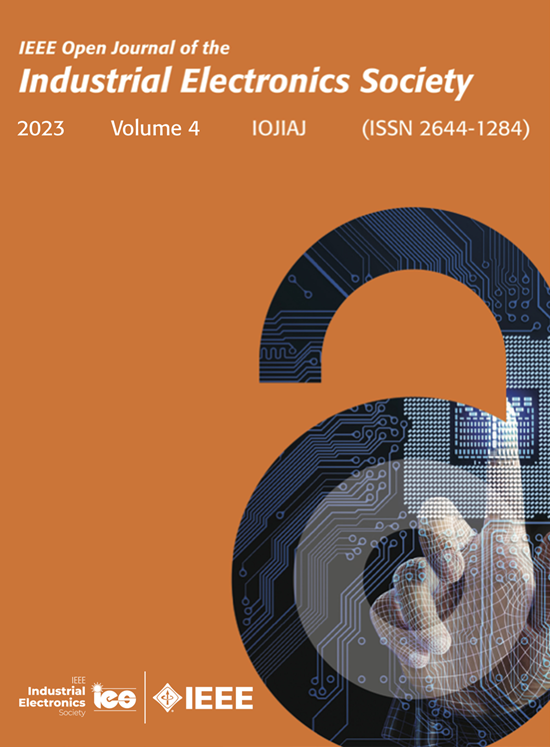成网逆变器PI电流控制器鲁棒自适应整定
IF 4.3
Q1 ENGINEERING, ELECTRICAL & ELECTRONIC
IEEE Open Journal of the Industrial Electronics Society
Pub Date : 2024-12-30
DOI:10.1109/OJIES.2024.3524007
引用次数: 0
摘要
近年来,电网形成(GFM)逆变器已成为一个日益活跃的研究兴趣,因为它们能够形成自主电网,并在纯电力电子环境中保持同步。这些机器的主要组成部分是几个脉冲宽度调制(PWM)控制的开关,从直流侧接收能量,然后是LC或LCL输出滤波器,产生几乎正弦的电流注入电网。滤波器电感通常很小,以避免高成本,因此微小的电压测量、延迟或PWM定时误差可能导致输出电流的大偏差。通过采用快速输出电流控制器(occ),可以减轻这种情况,这使我们能够纠正测量误差和延迟的影响,并准确地跟踪参考电流。这些控制器可以作为旋转参考系中的比例积分(PI)控制器或比例谐振控制器或甚至更复杂的结构来实现。GFM逆变器通常采用虚拟阻抗来获得occ的参考电流。虽然在强电网中非常有效,但当电网短路率变低时,这种控制结构面临稳定性问题。而对于电网跟随(GFL)逆变器,这一问题在过去的几年里已经得到了很好的研究,并提出了各种解决方案,对于GFM逆变器,虚拟阻抗和电流控制器参数的适当调谐尚未得到充分的理解。本文研究了采用PI电流控制器和虚拟阻抗的GFM逆变器的电网阻抗和各种控制参数的影响,并给出了在广泛的电网条件下实现稳定的所有参数的调整建议。我们进一步建议一个更新的过程来选择$LCL$过滤器值,并在实验设置中演示建议的调优。为了实现在线自动调谐,我们采用了一种测量网格阻抗的方法,即在网格中注入一个小的探测电流,其频率与网格频率接近但不同。本文章由计算机程序翻译,如有差异,请以英文原文为准。
Robust and Adaptive Tuning of PI Current Controllers for Grid-Forming Inverters
In recent years, grid forming (GFM) inverters have become an increasingly active research interest, due to their ability to form autonomous grids and to maintain synchronism also in purely power electronics-based environments. The main building blocks of these machines are several pulsewidth modulation (PWM) controlled switches, receiving energy from the dc side, followed by $LC$ $LCL$ $LCL$
求助全文
通过发布文献求助,成功后即可免费获取论文全文。
去求助
来源期刊

IEEE Open Journal of the Industrial Electronics Society
ENGINEERING, ELECTRICAL & ELECTRONIC-
CiteScore
10.80
自引率
2.40%
发文量
33
审稿时长
12 weeks
期刊介绍:
The IEEE Open Journal of the Industrial Electronics Society is dedicated to advancing information-intensive, knowledge-based automation, and digitalization, aiming to enhance various industrial and infrastructural ecosystems including energy, mobility, health, and home/building infrastructure. Encompassing a range of techniques leveraging data and information acquisition, analysis, manipulation, and distribution, the journal strives to achieve greater flexibility, efficiency, effectiveness, reliability, and security within digitalized and networked environments.
Our scope provides a platform for discourse and dissemination of the latest developments in numerous research and innovation areas. These include electrical components and systems, smart grids, industrial cyber-physical systems, motion control, robotics and mechatronics, sensors and actuators, factory and building communication and automation, industrial digitalization, flexible and reconfigurable manufacturing, assistant systems, industrial applications of artificial intelligence and data science, as well as the implementation of machine learning, artificial neural networks, and fuzzy logic. Additionally, we explore human factors in digitalized and networked ecosystems. Join us in exploring and shaping the future of industrial electronics and digitalization.
 求助内容:
求助内容: 应助结果提醒方式:
应助结果提醒方式:


